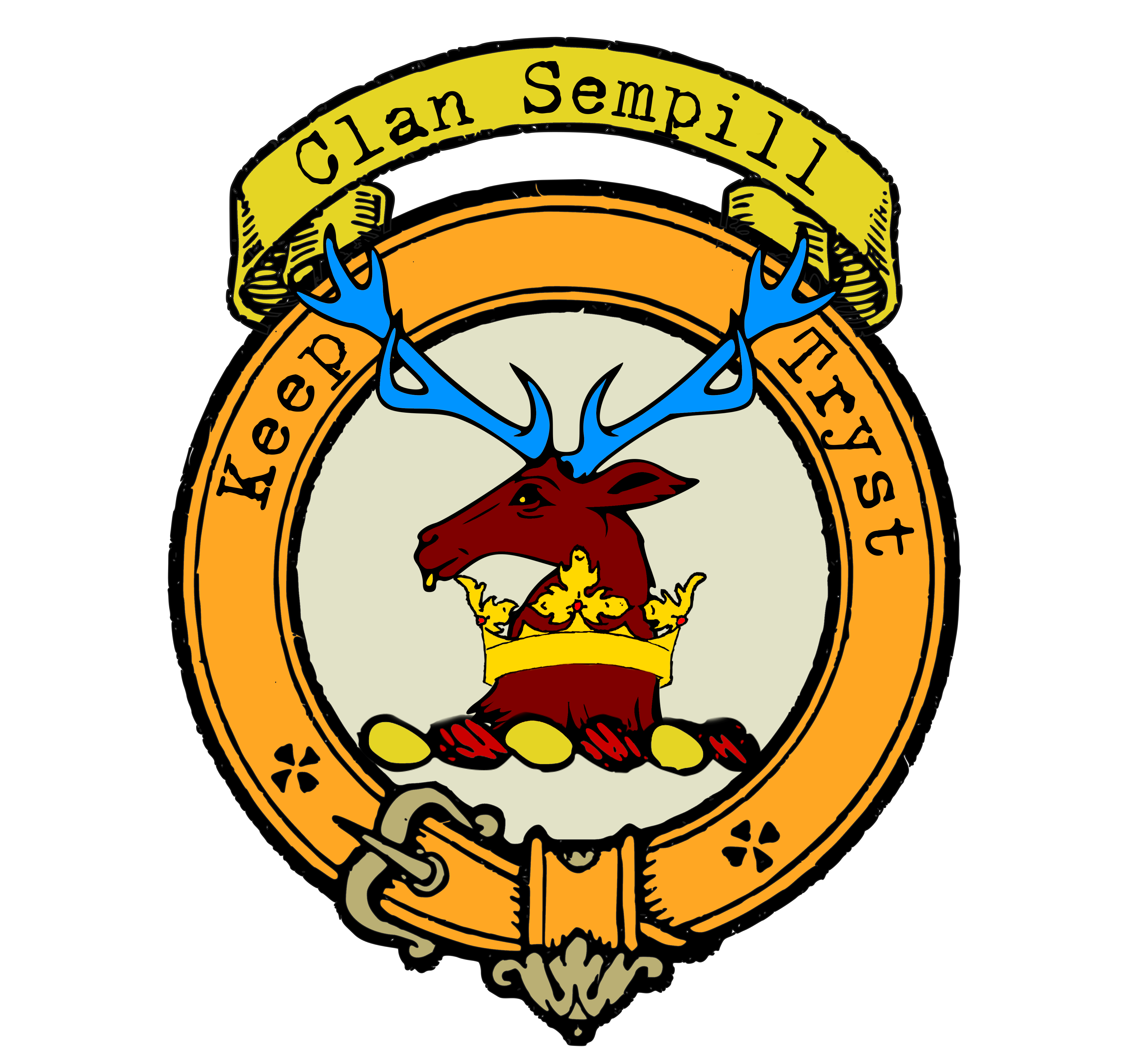Clan Sempill
|
|
CREST: A stag’s head Argent attired with ten tynes Azure and collard with a prince’s crown Or MOTTO: Keep tryst TRANSLATION: To Come Together VARIATIONS: N/A |
| The origins of the Sempill clan remain enigmatic. While some theories suggest that the name may have derived from “St. Paul,” others cast doubt on this claim. Nevertheless, the name Sempill became firmly rooted in Renfrewshire during the twelfth century, and its legacy was about to unfold.
The Sempill saga begins with Robert de Sempill, who witnessed important charters to Paisley Abbey around 1246. His loyalty and service did not go unnoticed, as he later served as the chamberlain of Renfrew and witnessed a charter of the Earl of Lennox. Robert’s two sons, Robert and Thomas, threw their support behind the legendary Robert the Bruce, earning royal favor for their devotion. The Sempill family’s territorial designation, Eliotstoun, was acquired prior to 1344, becoming a symbol of their lineage’s legacy. Sir Thomas Sempill of Eliotstoun gave his life fighting for James III at the Battle of Sauchieburn in 1488. His son, John, received the title “Lord Sempill” early in James IV’s reign, solidifying the family’s aristocratic standing. John’s dedication to Scotland is evident in his founding of the Collegiate Church of Lochwinnoch and the renovation of Castle Semple, a castle nestled beside Lochwinnoch. He fought valiantly alongside his king and ultimately fell at the Battle of Flodden in 1513. The Sempill clan was not merely a family of nobles; they were deeply involved in the political intrigues of their time. William Sempill, John’s son, played a significant role in advocating for the betrothal of Mary, Queen of Scots, to the son of Henry VIII of England. Robert, the Master of Sempill, staunchly supported Queen Mary but faced the seizure of his castle due to his opposition to the Reformation. The Sempills navigated the turbulent waters of Scottish politics with finesse. Their faith was unwavering, with some family members adhering to Catholicism even during the tumultuous Reformation era. This steadfastness earned them excommunication from the Church of Scotland. The Sempill family’s legacy continued through generations, with some members focusing on their estates, while others engaged in court intrigue and politics. The clan faced challenges and setbacks but persevered through their dedication to Scotland and their enduring belief in their heritage. In the 19th century, Clan Sempill saw the title pass into the female line when Maria Janet Sempill succeeded her brother. This trend continued into the 20th century when the current clan chief, the twentieth in line of the peerage, succeeded her father in 1965. |
|
Citations:
|
|
Purchase @ Redbubble
Purchase @ Amazon.com
Purchase @ Amazon.co.uk

